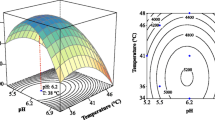Abstract
Catechins and alkylresorcinols are important secondary metabolites distributed in food products, sometimes exploited in quality control and/or as markers. The current methods for their quantitative analysis have some disadvantages such as cost, time consuming, and even insensitive or non-selective. Therefore, suitable, efficient methods are still required. As part of our research on new and rapid methods of analyses in plant and food products, a spectrophotometric method to quantify alkylresorcinols and catechins in plant products was developed and fully validated. The colored product by the diazo coupling between olivetol and catechin with diazotized sulfanilic acid was employed to develop the method. The effect of acid and diazonium salt concentration and the reaction time was analyzed. The method was linear in 0.8–8.3 and 0.6–10.2 μg/mL ranges to olivetol and catechin, respectively. Limit of detection and limit of quantification for olivetol and catechin were 0.253/0.768 and 0.106/0.321 μg/mL, respectively. Precision at intra-day and inter-day levels (relative standard deviation (RSD) 1.3–9.7 %) and accuracy (99.0–104.9 %) were also demonstrated. Additionally, the application of the method to plant samples containing alkylresorcinol or catechins was subsequently evaluated, being comparable with conventionally employed methods. Thus, the method demonstrated to be fast, easy, inexpensive, and reliable for quantifying these kinds of metabolites in food products.





Similar content being viewed by others
References
Ahmad AK, Hassan YI, Bashir WA (1986) Diazotised sulphanilic acid as a spectrophotometric reagent for the determination of trace amounts of indole in aqueous solution. Analyst 111:243–244
Bonin H, Fouquet E, Felpin FX (2011) Aryl diazonium versus iodonium salts: preparation, applications and mechanisms for the Suzuki-Miyaura cross-coupling reaction. Adv Synth Catal 353:3063–3084
El-Shahawi MS, Hamza A, Bahaffi SO, Al-Sibaai AA, Abduljabbar TN (2012) Analysis of some selected catechins and caffeine in green tea by high performance liquid chromatography. Food Chem 134:2268–2275
Gadkari PV, Balaraman M (2014) Catechins: sources, extraction and encapsulation: a review. Food Bioprod Proc 93:122–138
Gajda A, Kulawinek M, Kozubek A (2008) An improved colorimetric method for the determination of alkylresorcinols in cereals and whole-grain cereal products. J Food Comp Anal 21:428–434
He Q, Yao K, Jia D, Fan H, Liao X, Shi B (2009) Determination of total catechins in tea extracts by HPLC and spectrophotometry. Nat Prod Res 23:93–100
ICH Guideline (2005) Validation of analytical procedures: text and methodology Q2(R1). http://www.ich.org/products/guidelines/quality/article/quality-guidelines.html. Accessed Jan 2015
Kozubek A, Tyman JHP (1999) Resorcinolic lipids, the natural non-isoprenoid phenolic amphiphiles and their biological activity. Chem Rev 99:1–26
Linko A-M, Parikka K, Wähälä K, Adlercreutz H (2002) Gas chromatographic-mass spectrometric method for the determination of alkylresorcinols in human plasma. Anal Biochem 308:307–313
Mizukami Y, Sawai Y, Yamaguchi Y (2007) Simultaneous analysis of catechins, gallic acid, strictinin, and purine alkaloids in green tea by using catechol as an internal standard. J Agric Food Chem 55:4957–4964
Ogura R, Ikeda N, Yuki K, Morita O, Saigo K, Blackstock C, Nishiyama N, Kasamatsu T (2008) Genotoxicity studies on green tea catechin. Food Chem Toxicol 46:2190–2200
Ravichandran R, Rajendran M, Devapiriam D (2014) Antioxidant study of quercetin and their metal complex and determination of stability constant by spectrophotometry method. Food Chem 146:472–478
Rose J (1964) Advanced physico-chemical experiments. Sir Isaac Pitman, London, 414p
Ross AB (2012) Present status and perspectives on the use of alkylresorcinols as biomarkers of wholegrain wheat and rye intake. J Nutr Metab. 2012:1–12. doi:10.1155/2012/462967
Ross AB, Shepherd MJ, Schüpphaus M, Sinclair V, Alfaro B, Kamal-Eldin A, Åman P (2003) Alkylresorcinols in cereals and cereal products. J Agric Food Chem 51:4111–4118
Ross AB, Åman P, Andersson R, Kamal-Eldin A (2004) Chromatographic analysis of alkylresorcinols and their metabolites. J Chromatograph A 1054:157–164
Sampietro DA, Vattuone MA, Catalán CAN (2009) A new colorimetric method for determination of alkylresorcinols in ground and whole-cereal grains using the diazonium salt Fast Blue RR. Food Chem 115:1170–1174
Sampietro DA, Jimenez CM, Belizán MM, Vattuone MA, Catalán CAN (2013) Development and validation of a micromethod for fast quantification of 5-n-alkylresorcinols in grains and whole grain products. Food Chem 141:3546–3551
Singh HP, Ravindranath SD, Singh C (1999) Analysis of tea shoot catechins: spectrophotometric quantitation and selective visualization on two-dimensional paper chromatograms using diazotized sulfanilamide. J Agric Food Chem 47:1041–1045
Zuo Y, Chen H, Deng Y (2002) Simultaneous determination of catechins, caffeine and gallic acids in green, oolong, black and pu-erh teas using HPLC with a photodiode array detector. Talanta 57:307–316
Acknowledgments
The authors thank MU Nueva Granada for financial support. The present work is a product derived by the Project INV-CIAS-1471 financed by Vicerrectoría de Investigaciones at UMNG—Validity 2014.
Conflict of Interest
The authors declare that they have no conflict of interest. This article does not contain any studies with human or animal subjects.
Author information
Authors and Affiliations
Corresponding author
Rights and permissions
About this article
Cite this article
Bernal, F.A., Orduz-Diaz, L.L., Guerrero-Perilla, C. et al. Diazo Coupling Reaction of Catechins and Alkylresorcinols with Diazotized Sulfanilic Acid for Quantitative Purposes in Edible Sources: Method Development and Validation. Food Anal. Methods 9, 411–418 (2016). https://doi.org/10.1007/s12161-015-0207-6
Received:
Accepted:
Published:
Issue Date:
DOI: https://doi.org/10.1007/s12161-015-0207-6




